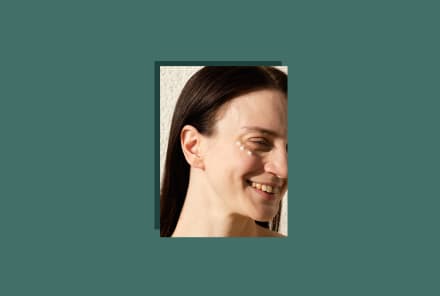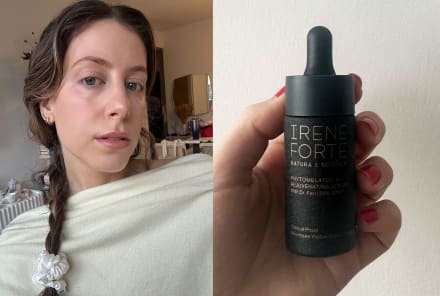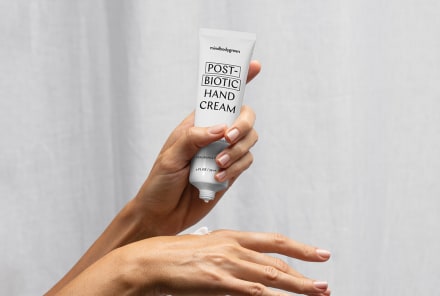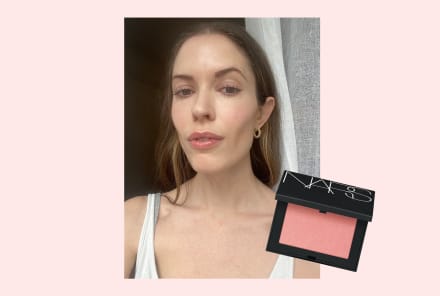Advertisement
Hot Oil Treatment: What Does It Do For Your Hair & How to Do It

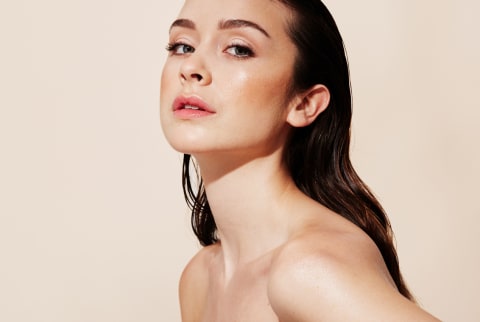
Just the sound of a hot oil treatment makes me at ease—I picture something like a luxe massage for my hair with silky, comfortingly warm oils. It sparks visions of shiny, long, flowing hair. But how accurate are my visions of grandeur? We looked into the research to find out.
What is a hot oil treatment?
It's a hair care method in which slightly warmed oil is used to coat and "mend" dry hair. Traditionally, this is an at-home treatment (not many salons offer it), and it tends to be best for very dry, coarse hair. The treatment in practice varies quite a bit: There isn't one definitive method that all users agree on, so you'll end up seeing a lot of different recommendations out there.
The oil is heated because it is thought to help open the cuticle and let the oil penetrate deeper. "The idea with heat is that it breaks down the bonds and helps coat it better," says board-certified dermatologist Doris Day, M.D. "I get the theory behind it, but there isn't data to prove it. But it's been done for a long period of time, and we haven't really seen damage from it, but it really does depend on the technique to it."
And from the research that's out now, the benefits you might get and the oil penetration—as you'll see later—has far more to do with the oil than the environment in which the oil is applied.
What are the benefits?
Protects against breakage: One study showed1 that applying an oil as a pre-wash product helps protect hair from physical damage and friction. Physical damage occurs when you work the hair too aggressively without any sort of lubricant. (Essentially the oil creates a physical barrier around the strands so they don't cause friction.) It's why if you try to brush your hair without applying a detangler beforehand, you'll often see more breakage. Hot oil treatments are often used before washing, and therefore will reduce vulnerability.
Temporarily reduces frizz: Frizz occurs when the cuticle of the hair is raised, separating the individual strands (that's why frizzy hair is often called "puffy"). When you seal down the cuticle with an oil, not only are you superficially reducing the chances of the cuticle being raised, but you are also reducing the amount of external moisture that can enter the hair shaft. According to one study2, the film created by oils helped reduce the amount of water vapor pickup.
Adds shine: The point of oils is to wrap the hair cuticle, making it appear more lustrous by creating a smooth surface and reflecting light. "Oils are a great natural way to coat the hair and make it appear healthier and less dull," says hairstylist Clay Nielson. So if you apply an oil pre-shower, and don't fully shampoo it out, the residue will still be present on the hair, adding shine.
Reduces signs of aging: For those with aging hair, occasional hot oil treatments might be very beneficial. However, you need to pick oils or products with a high antioxidant count (look for oils that contain or are "infused" with vitamin E, an oil-soluble antioxidant). One study showed 3that applying antioxidants topically to the strand can help reduce free-radical damage, the main cause of aging hair.
What are the best oils for the treatment?
Not all hot oil treatments are created equal.
The best oils are those with a low molecular weight. In a study4 that pitted a few different types of oil against each other, it showed that smaller molecular mass had a better absorption rate. (For example, coconut oil and sunflower seed oil absorbed; mineral oil did not.)
Another thing to look for is what type of oil it is. Much like you pay attention to saturated versus unsaturated fats when you cook, this also plays a role in hair compatibility. According to research5, hair responds better to monounsaturated oils, like olive, sesame, and safflower seed oil.
But, coconut oil is likely the best option for your hot oil treatment. Not only has the oil had the most scientific research done about it, but the oil's benefits are pretty remarkable across the board. First and foremost it has a low molecular weight (see here6) and also has moisture content (most oils don't), so it can condition the strand instead of just sitting atop it. The most impressive, however, is that it helps hair retain protein because the type of fatty acid in the oil has an affinity toward protein—helping strands hold onto them, according7 to studies.
So you want to try—how do you do it?
The first step is to select your oil (take our recommendations above). From there, there are few different ways you can do this. It simply depends on your hair's needs: Dry, coarse, damaged hair benefits most from an intense treatment, while finer hair will likely not need as much oil. "Always, with oils, you need to watch how much you are using and how often," says licensed cosmetologist and hairstylist Gabrielle Corney. "Because too much can result in weight and buildup."
In a small glass bowl, heat a few tablespoons of oil (it will depend on how long your hair is, but you don't need a lot) by microwaving it for 10 seconds. Always test the temperature on your hand before—never directly apply to your scalp or hair. If the temperature is warm but comfortable, simply start pouring it over dry hair in small doses, stopping to massage it in and pull it through the length of the strand. When your head is sufficiently coated, wrap it in a shower cap and let it sit for upward of 30 minutes. (Towels or other fabrics will absorb the oil, so avoid those.)
After, you can either rinse it out with just water, a sulfate-free shampoo, or, even keep it in. "This depends on how coarse and dry your hair is," says Nielson. "If your hair is appearing heavy or greasy from the oil, you should shampoo it out so you get that lift back. But if your hair needs it, you absolutely can keep it in. You just need to evaluate for yourself."
7 Sources
- https://www.ncbi.nlm.nih.gov/pubmed/19450426/
- https://www.ncbi.nlm.nih.gov/pubmed/17520153/
- https://www.ncbi.nlm.nih.gov/pmc/articles/PMC2929555/
- https://www.ncbi.nlm.nih.gov/pubmed/12715094/
- https://link.springer.com/book/10.1007%2F978-1-4757-2009-9
- https://www.ncbi.nlm.nih.gov/pubmed/22487449/
- https://www.ncbi.nlm.nih.gov/pubmed/11413497
Watch Next
Enjoy some of our favorite clips from classes
Enjoy some of our favorite clips from classes
What Is Meditation?
Mindfulness/Spirituality | Light Watkins
Box Breathing
Mindfulness/Spirituality | Gwen Dittmar
What Breathwork Can Address
Mindfulness/Spirituality | Gwen Dittmar
The 8 Limbs of Yoga - What is Asana?
Yoga | Caley Alyssa
Two Standing Postures to Open Up Tight Hips
Yoga | Caley Alyssa
How Plants Can Optimize Athletic Performance
Nutrition | Rich Roll
What to Eat Before a Workout
Nutrition | Rich Roll
How Ayurveda Helps Us Navigate Modern Life
Nutrition | Sahara Rose
Messages About Love & Relationships
Love & Relationships | Esther Perel
Love Languages
Love & Relationships | Esther Perel
